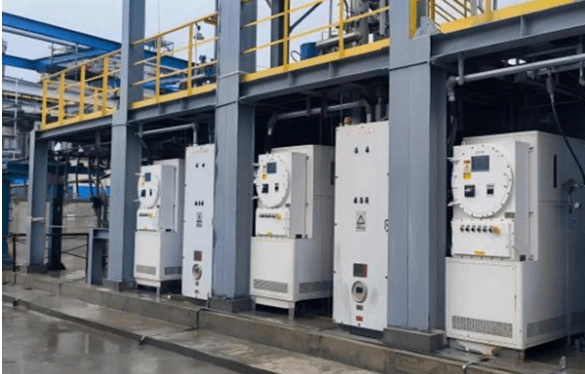Oil heating temperature control equipment is widely applied in modern industrial production, due to its characteristics of high efficiency, stability, energy saving, and environmental friendliness. These advantages are primarily enabled by various high-tech technologies. Let's explore the key technologies adopted by this equipment:
1. Distributed Control System (DCS)
The distributed control system is a network-based control framework with high reliability. It enables remote monitoring and integrated control of the entire system.
By implementing DCS, the equipment achieves seamless linkage between controllers, allowing real-time management, monitoring, and adjustment of the system. This creates a safer and more efficient operational environment.
2. PID Control Technology
A PID (Proportional - Integral - Derivative) controller is a classic component for dynamic system regulation. It works by processing feedback signals to continuously correct output, ensuring system stability.
The temperature sensor collects real-time temperature data as feedback, while the heating element's power output serves as the control signal. Adjusting PID parameters guarantees precise and stable heating temperature.
3. Artificial Intelligence (AI) Technology
AI technology endows the system with autonomous analysis, decision-making, and adaptive capabilities by simulating human thinking processes.
Applications include:
Fault diagnosis: Automatically identifies anomalies and triggers alerts.
Optimization control: Adjusts parameters in real time to optimize heating efficiency.
Predictive maintenance: Predicts component failures based on operational data.
4. New Material Technology
High-performance materials are used in critical components to withstand harsh conditions:
Heating elements & sensors: High-temperature resistant alloy materials and advanced sensing technologies ensure stability in extreme heat and corrosive environments.
Housing & insulation: Fireproof, corrosion-resistant composite materials extend the equipment's service life and enhance safety.
5. Microprocessor Technology
Microprocessors serve as the "brain" of the equipment, enabling rapid computation and complex control:
Functions include:
Acting as the core of the PID controller for real-time calculations.
Processing and storing operational data, converting input signals, and managing output interfaces.
In summary, the integration of these high-tech technologies gives oil heating temperature control equipment superior performance, functionality, and reliability compared to traditional systems. This not only meets market demands but also supports production efficiency across various industries. Hopefully, this overview provides a clearer understanding of the technology behind these systems.
www.dscientz.com
Ningbo Scientz Biotechnology Co., Ltd.

